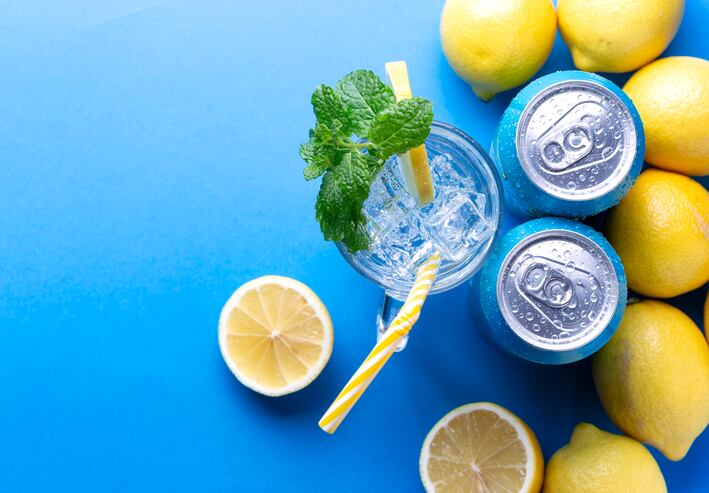Like many within grocery industry, the soft drinks category has experienced an unanticipated shake up this year. That’s not to say it’s been an entirely damaging experience. The category has faced positives and negatives; such as a decline in on-the-go opportunities but an increase in home consumption occasions. Now as we look ahead, the question is what’s in store for next year?
Learnings are ripe for 2021
One of the biggest impacts to the category was experienced earlier in the pandemic, where take-home sales exploded [up 17.6% 4 w/e 22 March, Kantar]. However, restrictions to movement were less than ideal for driving impulse purchases and single serve formats suffered as shoppers were less likely to dwell instore longer than necessary and, for many, their on-the-go way of life was put on hold.
The pandemic looks set to continue an ongoing need for lockdowns or restrictions, meaning larger formats suitable for at-home consumption will continue to be in demand well into 2021.
Much like the suppression of on-the-go lifestyles, social opportunities around food and drink will be subdued, both through restrictions and longer-term financial concerns. We will see a continued increased in at-home alcohol consumption for some, creating opportunities to expand into mixer usage occasions with recipes and serving suggestions.
At the same time, with health growing in importance, other shoppers will continue the shift toward reducing alcohol intake. This opens up space for premium brands such as Fentimans and Belvoir to cater toward elevated soft drink occasions; for where alcohol isn’t wanted but an everyday Coke won’t cut it.
Expand the shopper relationship
There’s significant scope for brands to offer added value and build relationships with shoppers through experiences and inspiration relevant to increased at-home consumption.
One option is tapping into enjoyable at-home activities. Gaming stands out, a growing pre-pandemic market, it is now benefiting from increased time at-home. And with new console launches this year, gaming looks set to stay. Take caution here; as there’s no point jumping on any popular activity. This approach only works for brands with credibility in the space, and when the activity is relevant to the target audience.
Another option is partnering with other brands. Partnerships enable brands to benefit from incremental pulling power that other brands can offer and can be a route to establish a role in providing holistic solutions for shopper needs. We have already started to see this with ‘occasion-based’ product sets, like ‘big night in’ bundles.
More premium brands, such as San Pellegrino, may benefit from offering branded experiences that create a sense of added value uniquely attributable to them. As the virtual experience economy has moved away from a fringe opportunity, entertaining consumers in their home environments could forge deeper connections.
Cater to a new age of value
The reality of an unstable economy means a shake-up for shoppers’ perceptions of value, and therefore how brands cater to value expectations. Already retailers have a revived focus on building an Everyday Low Prices (EDLP) landscape, whilst numbers of shoppers feeling the pinch are likely to continue growing as job losses mount and the recession kicks in. As a result, driving perceived value will be absolutely critical for brands competing against own label ranges.
Many factors will be affected here, but two standouts areas of increased importance are price and on-pack promotions, as value with purchase will play a key factor in purchase decision making. On-pack promotions have the upper hand, as unlike price cuts and price promotions they do not risk devaluing the brand. In contrast, they can build and strengthen brand equity through rewards or promotions that align with established brand values.
Throughout the recession brands should consider the bigger picture and long-term impact on their brand from the way they choose to offer value.
Health messaging in the spotlight
Ongoing issues surrounding High Fat Salt Sugar (HFSS) means some uncertainty remains around what will happen. When the sugar tax levy was introduced, we saw many brands opt for the preventive process of reformulation, bringing them within guidelines. The precautions to be considered now are around media placement and messaging.

However, regardless of the impact to messaging, it will be interesting to see how shoppers respond. Contrasting desires for health and indulgence are likely to grow, as a renewed focus on health will benefit healthier beverages that boast functional ingredients, whilst difficult times will prompt shoppers to look toward soft drinks as permissible pleasures too.
Overall, whilst 2020 has been a huge curveball for the industry, it has also offered an insight into new opportunities for brands who are ready and willing.
About ZEAL Creative: As a UK brand activation marketing agency specialising in FMCG, ZEAL Creative delivers multi award-winning campaigns for brands including Kellogg’s, Pringles, KitKat, McCain and Warburtons. ZEAL ranked 40th overall in The Drum’s Top 100 Independent Agencies 2019 and scooped seven awards at the Integrated Marketing Communications (IMC) 2019 Awards in Europe. The agency has also been ranked 47th in Campaign’s annual list of the ‘Best UK Agencies to Work for 2020’.

